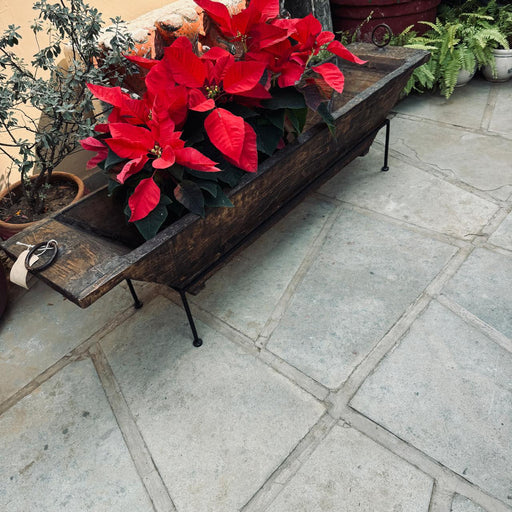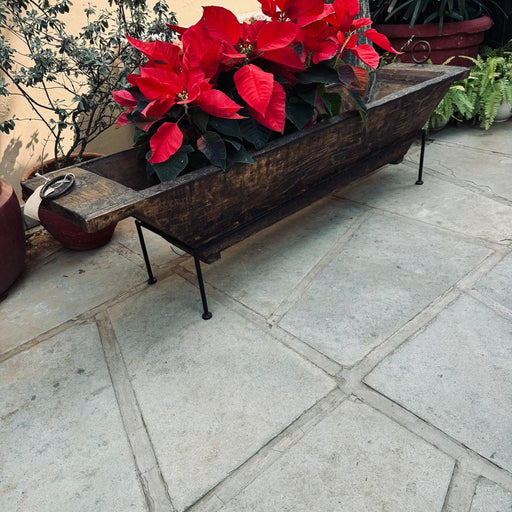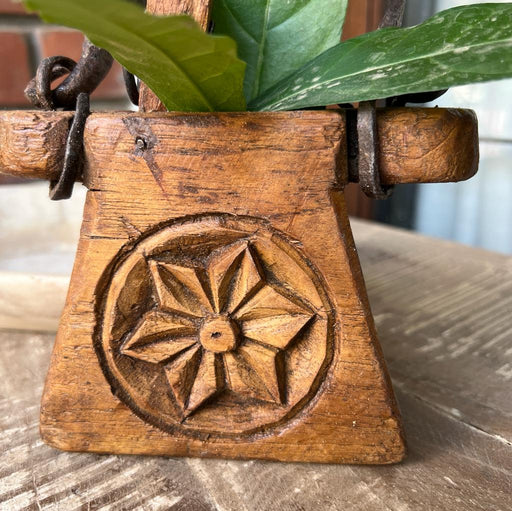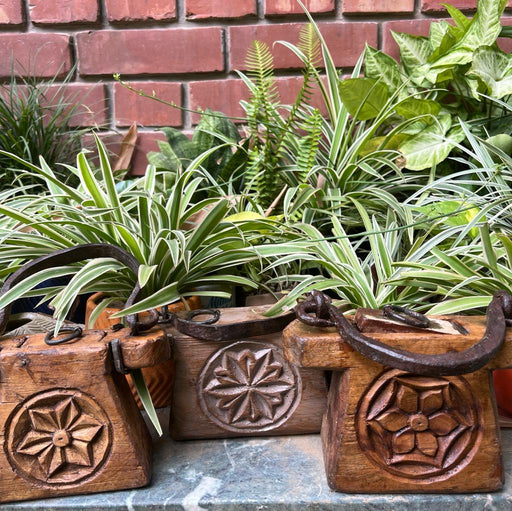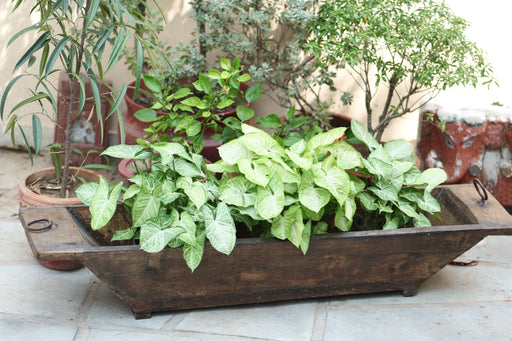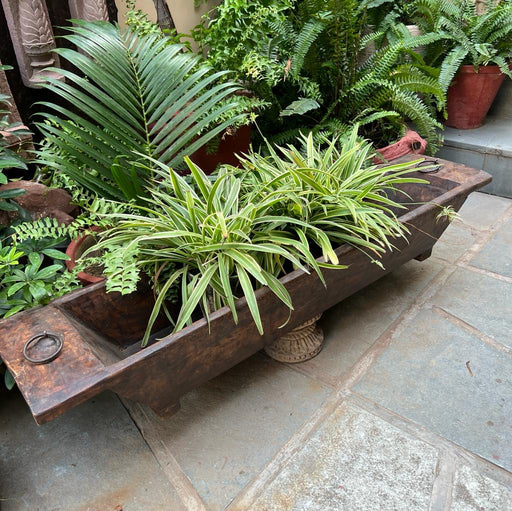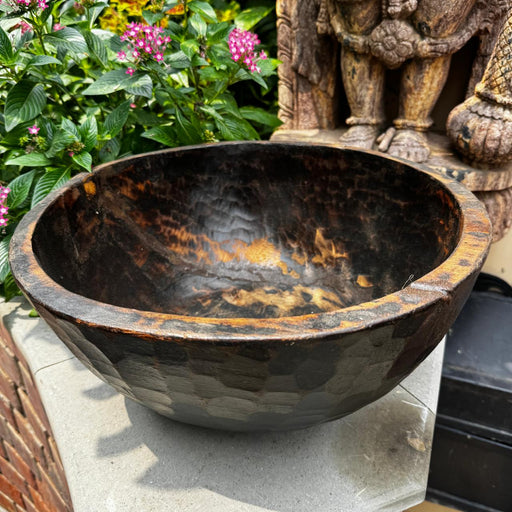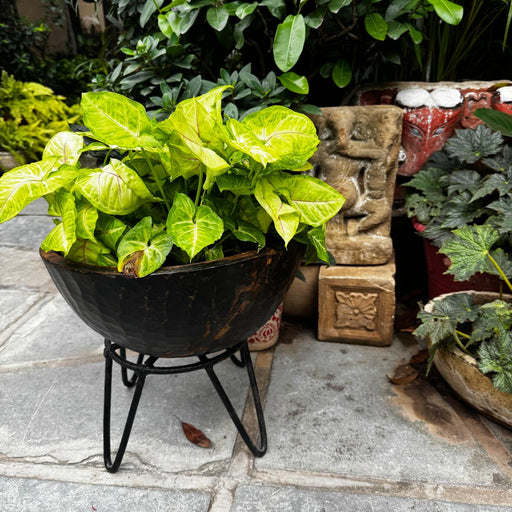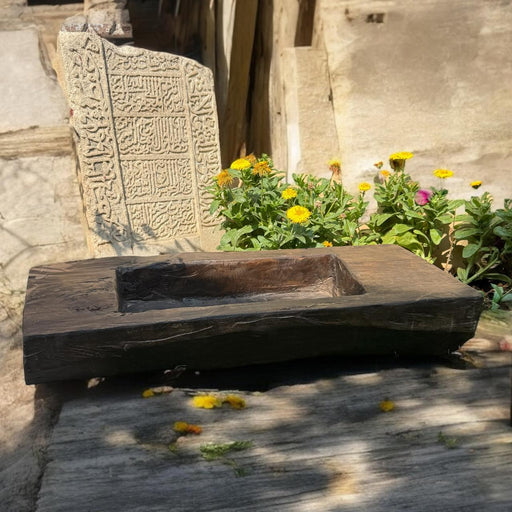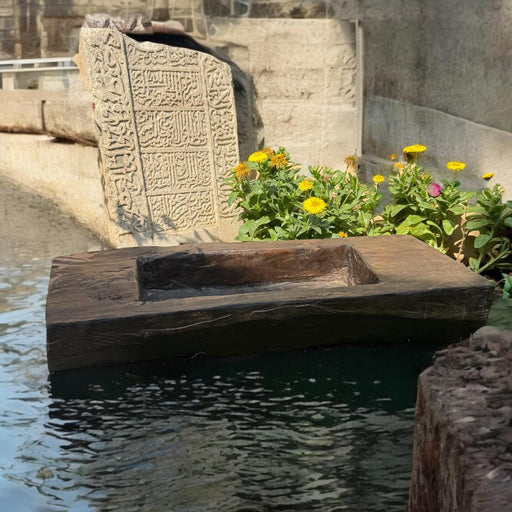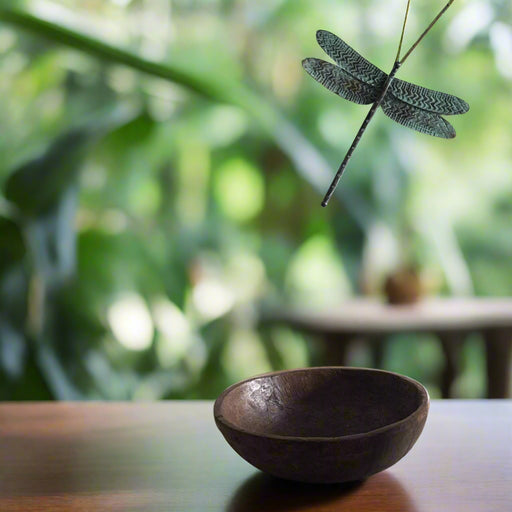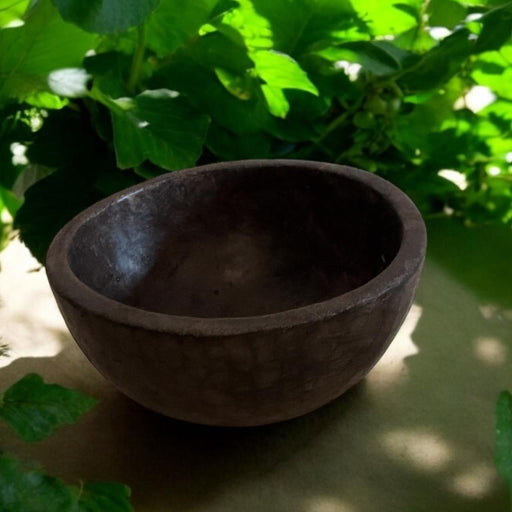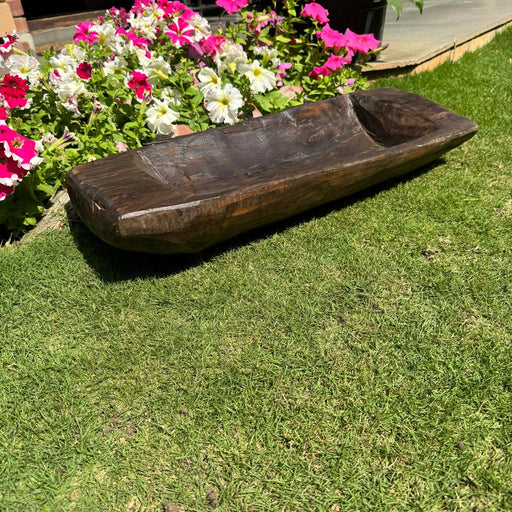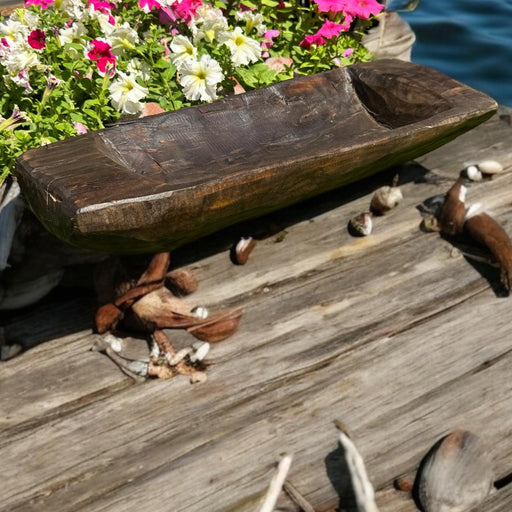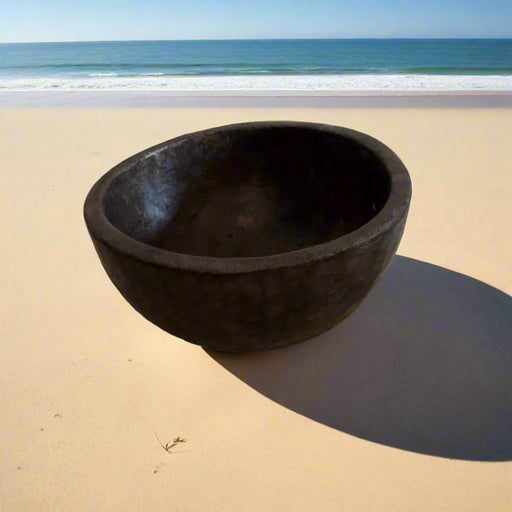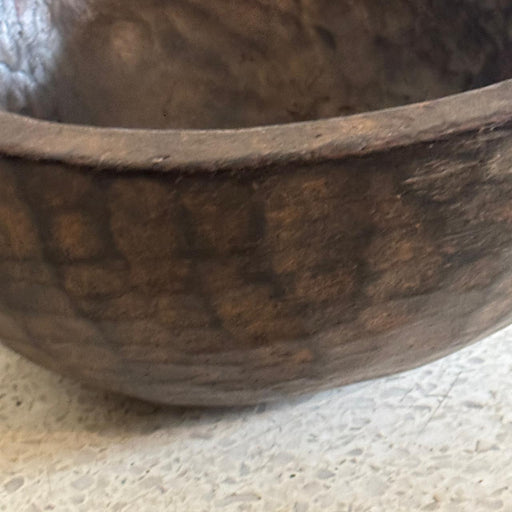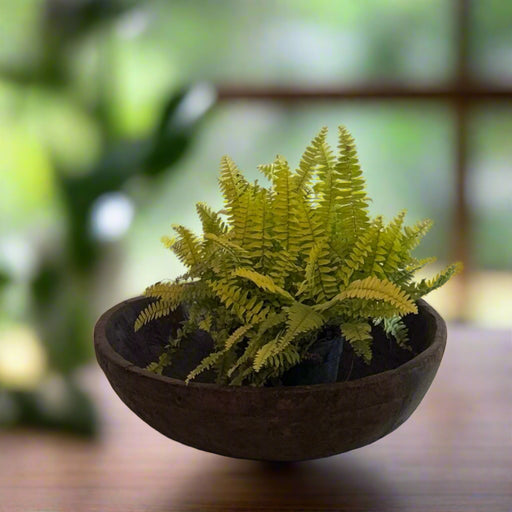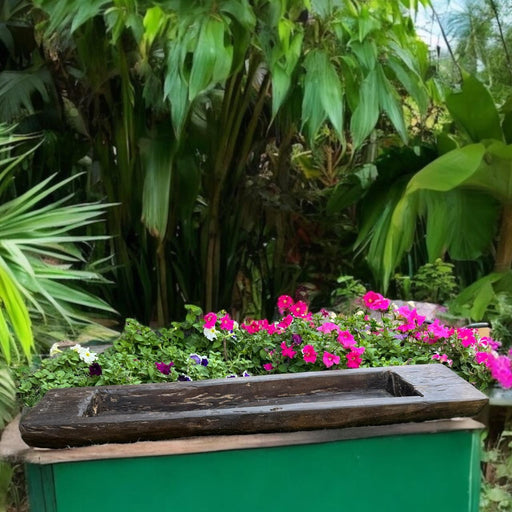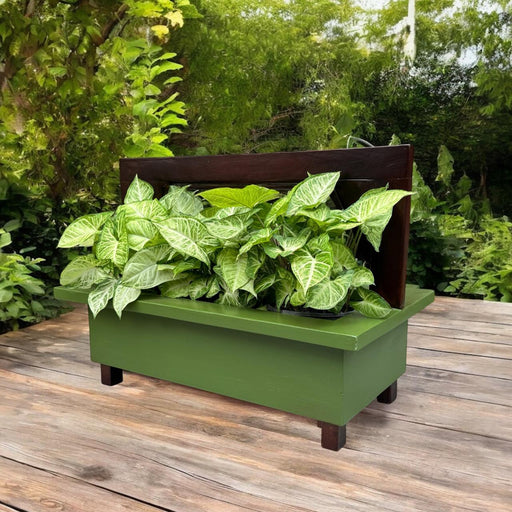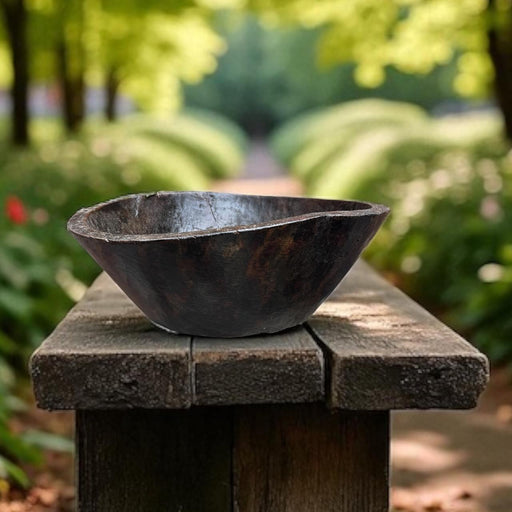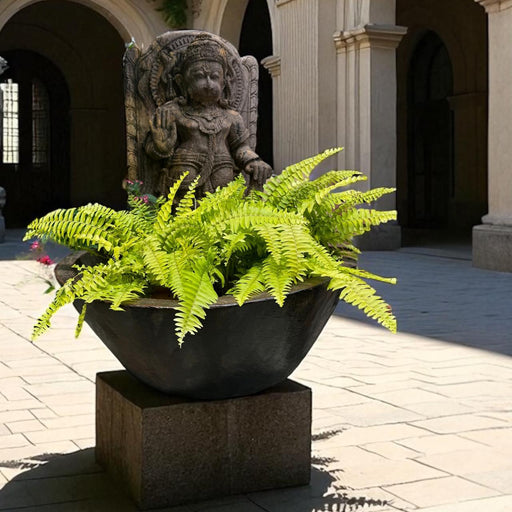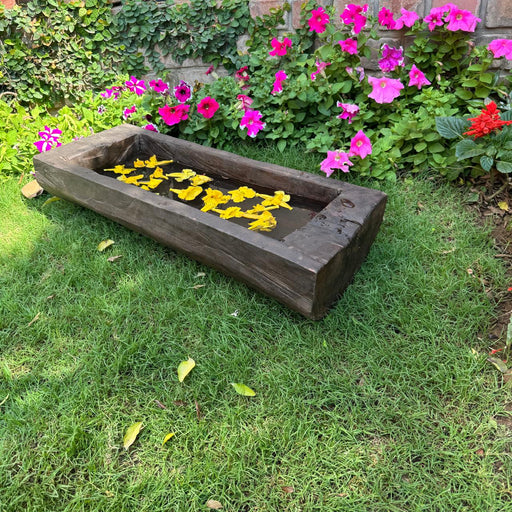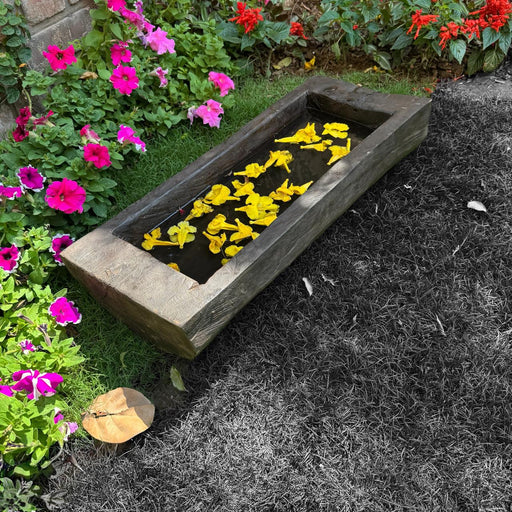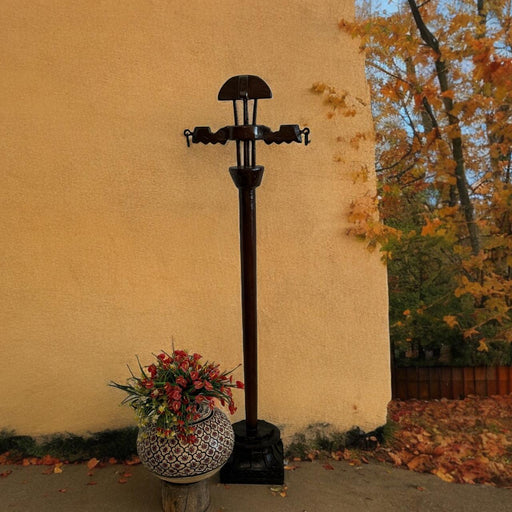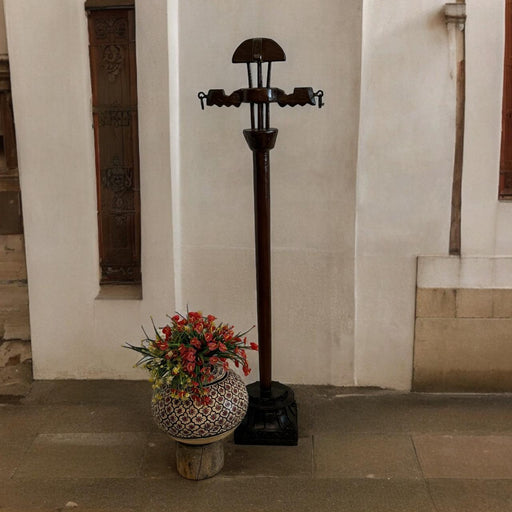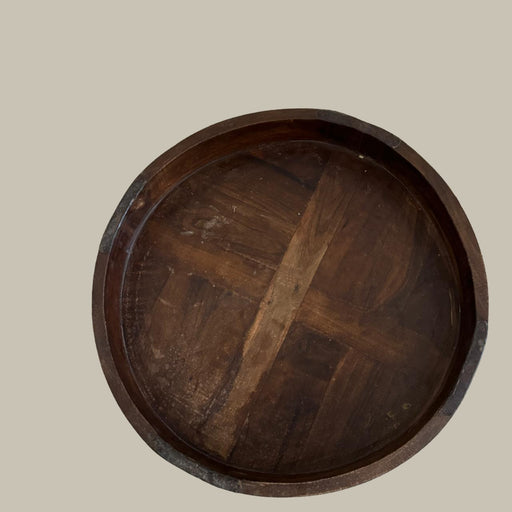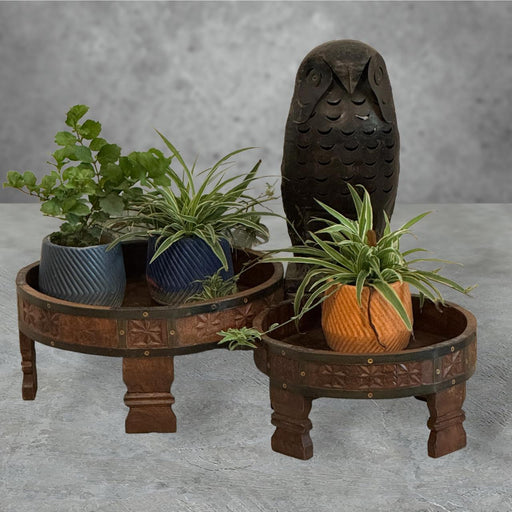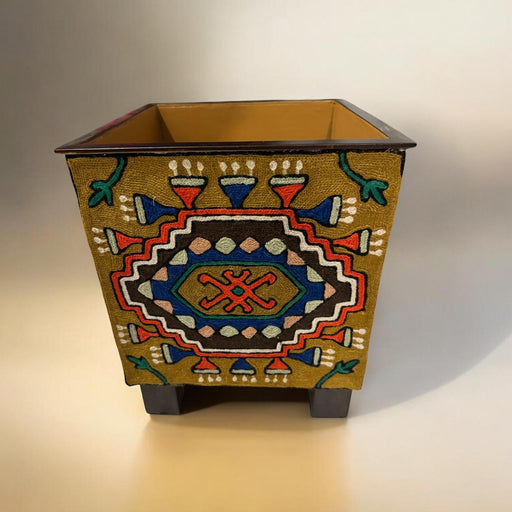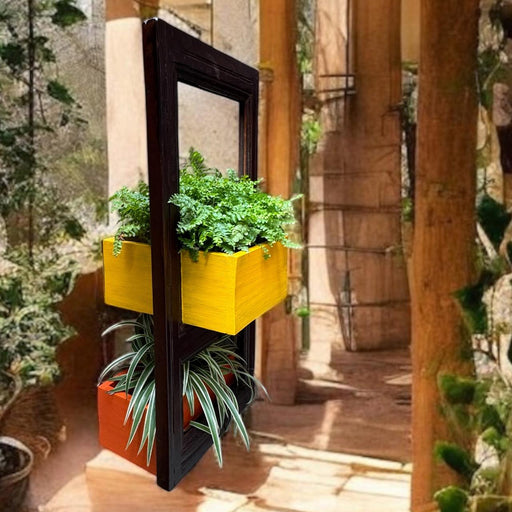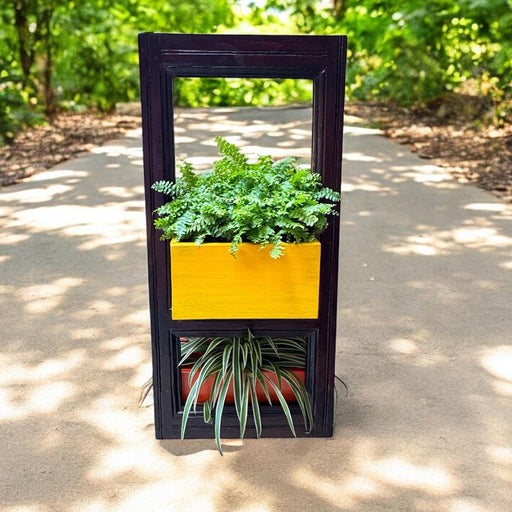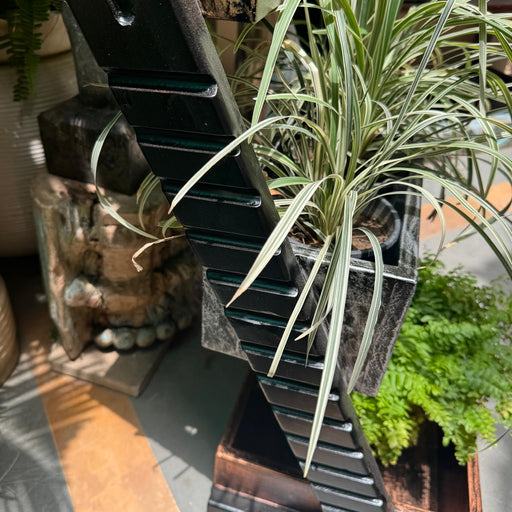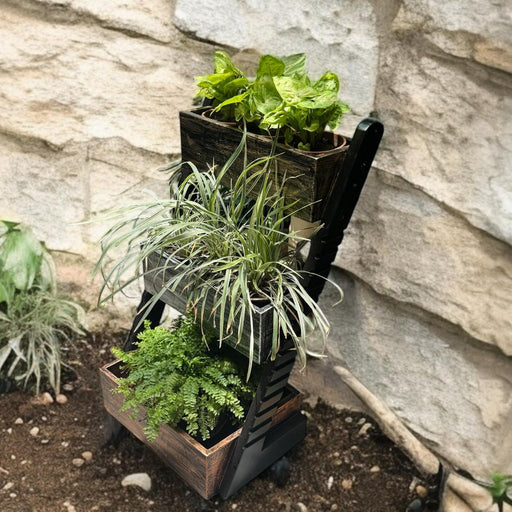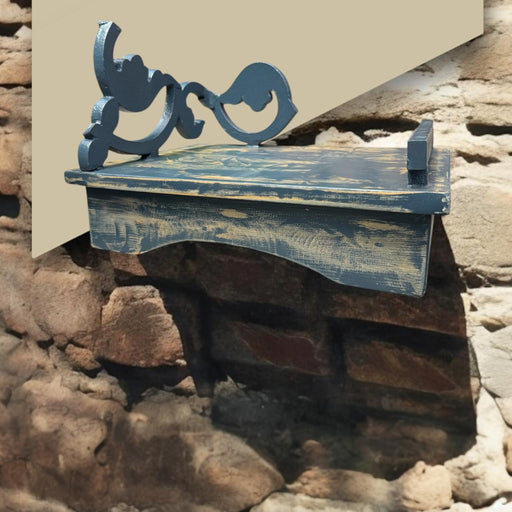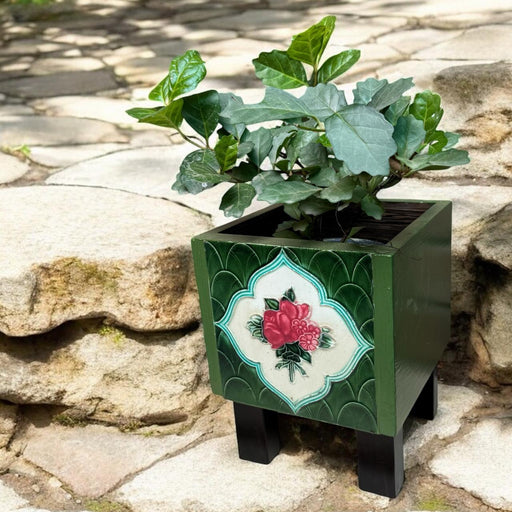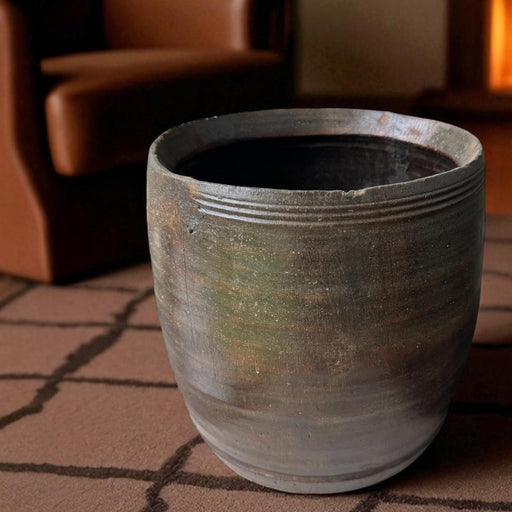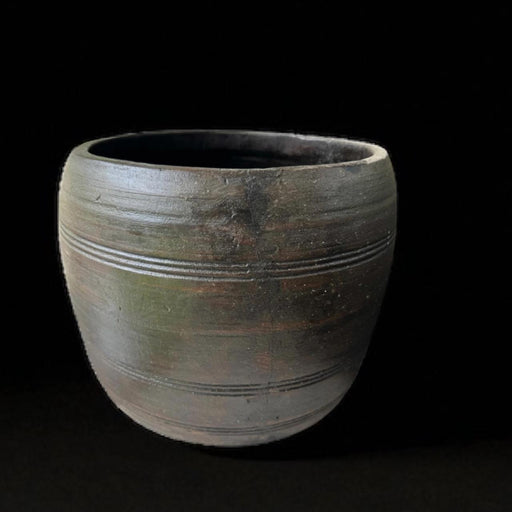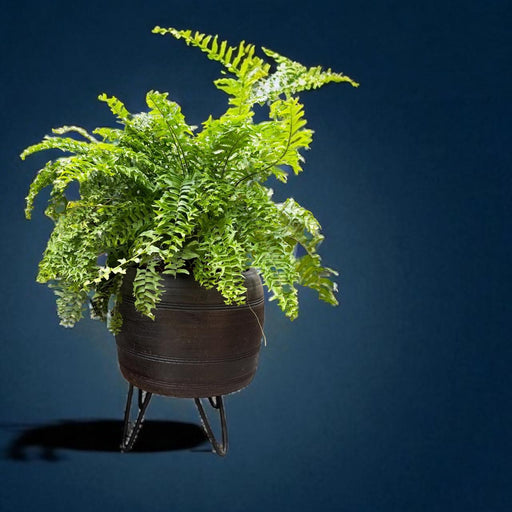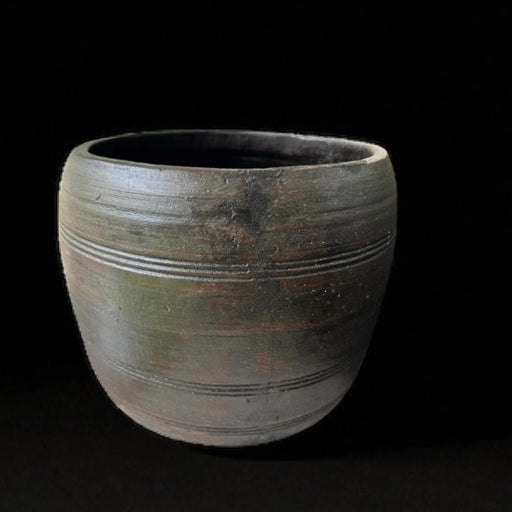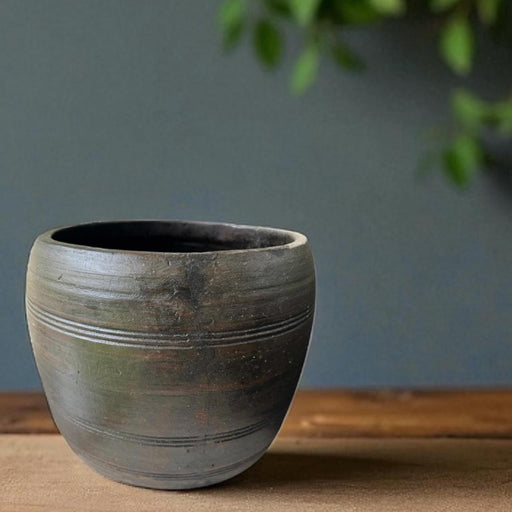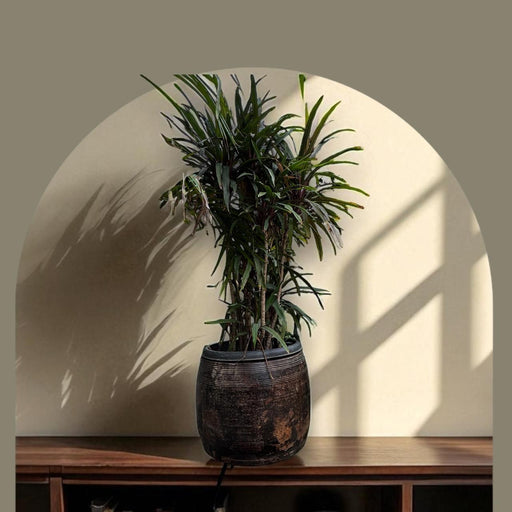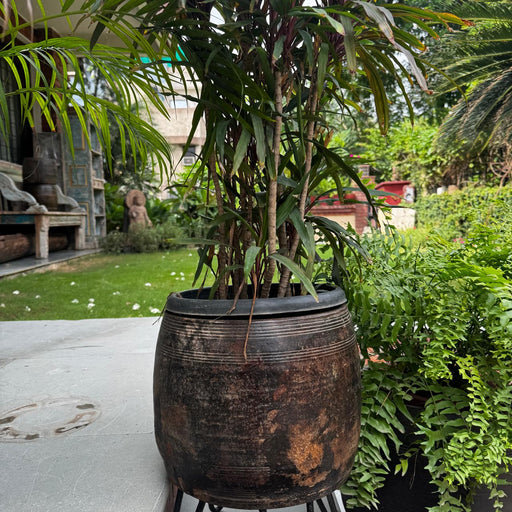Gardening enthusiasts and homeowners seeking to decorate their homes and gardens with the beauty of nature often turn to a variety of planters to nurture their beloved plants and flowers. Among the different options available (including metal, plastic, ceramic, etc.), wooden planters emerge as a popular and versatile choice. These wooden wonders not only lend an aesthetic appeal to your garden, they also offer an array of benefits for both plants and gardeners alike.
In this comprehensive guide, we'll take a deep dive into the world of wood planters, exploring their diverse types, the benefits they offer, and the pivotal question of whether to purchase them or embark on a DIY journey to craft your very own wooden planter boxes.
What is a Wooden Planter?
A wooden planter is a container made primarily from wood, designed for planting flowers and small trees. They come in a variety of sizes, shapes, and designs, making them an attractive addition to any outdoor or indoor space. Crafted from materials like cedar, teak, or even repurposed wood, these planters offer a unique blend of natural beauty and functionality. They’re especially great for urban homes, where planting flora at home is difficult due to the lack of garden space.
Different Types of Wooden Planters?
Wooden planters offer a diverse range of styles to suit various preferences and garden aesthetics. Some of the popular types are as follows:
1. Box Planters
Rectangular or square-shaped planters are extremely versatile and find their place along walls, fences, or patios. Whether you're considering large outdoor wood planters or more compact ones, box planters remain adaptable to diverse settings.
2. Barrel Planters
Infusing a rustic charm reminiscent of wooden barrels, these planters add a touch of old-world allure to gardens. Their ample size makes them ideal for housing larger plants and trees, amplifying the grandeur of your green spaces.
3. Tiered Planters
Tiered planters incorporate multiple levels, or tiers, thus adding an architectural grandeur to your home. This design allows for a visually captivating arrangement of plants at varying heights, adding dimension to your garden's visual narrative.
4. Hanging Planters
As the name suggests, these are wooden planter hanging options that dangle from hooks or brackets on the ceiling. They are perfect for cascading plants and vines, infusing a vertical facet into your garden and optimizing space utilization.
Best Material for Planter Boxes
Choosing the right wood for your planter box is crucial, considering aspects such as aesthetics, durability, resistance to insects, and longevity. Here are various wood options commonly used for planters, along with their important characteristics:
Cedar Wood
- Highly popular for planter boxes due to its natural resistance to decay.
- Contains natural oils that act as preservatives, extending the lifespan of the planter.
- Aromatic scent repels pests and insects.
- Lightweight and easy to work with, making it a preferred choice for DIY projects.
- Various cedar species offer different shades and textures, enhancing the visual appeal.
Redwood
- Known for its durability and natural resistance to decay and insects.
- Rich reddish-brown colour adds a touch of elegance to planters.
- Contains tannins that deter pests and fungi.
- Requires minimal maintenance and can last for years, making it suitable for both outdoor and indoor planters.
Teak Wood
- Highly prized for its exceptional durability and resistance to moisture, rot, and insects.
- Develops an attractive silver-grey patina when exposed to weather, offering a unique visual appeal.
- High oil content keeps the wood looking fresh and prevents cracking, making it great for hostile environments.
- Great choice for creating a wooden planter hanging on the ceiling, or for indoor plants.
Oak Wood
- Known for its high strength and durability.
- Available in various species, each with its own distinct grain pattern and colour.
- Can withstand outdoor conditions, especially when properly treated or finished.
- Hardwood characteristic provides a solid base for planters.
- Requires regular sealing to prevent moisture absorption.
Pine Wood
- Offers an economical option for wooden planters, but needs more care than other wood options.
- Light colour allows for easy customization through painting or staining.
- The softwood variety can be prone to decay and insects if not properly treated.
- Requires staining or sealing to enhance its longevity.
- Suitable for planters that won't be exposed to excessive moisture.
Douglas Fir
- Strong and durable softwood option.
- Offers good resistance to decay and insects, especially when treated.
- Light colour with a pronounced grain pattern looks great.
- Requires proper finishing to ensure longevity in outdoor settings.
- Ideal for large planters due to its strength.
Cypress Wood
- Offers natural resistance to decay and insects.
- Available in a variety of shades, pale yellow to light brown colour, with a straight grain pattern.
- High natural oil content contributes to durability and longevity.
- Widely used in humid climates due to its moisture-resistant properties.
- Can be left unfinished for a rustic look, or can be stained for added protection.
Spruce Wood
- A budget-friendly option if you want wooden planters for large plants and small trees.
- Possesses moderate resistance to decay and insects, which can be improved with treatment.
- Features a light colour that can be stained or painted to match your preferences.
- Requires sealing or finishing to extend its lifespan.
- Suitable for smaller planters and DIY projects, especially for gardeners on a budget.
Chestnut Wood
- Offers natural resistance to decay and insects.
- Features a warm, rich colour that darkens over time, which looks very pretty.
- Requires proper sealing to prevent weathering and prolong the durability of the wood.
- Known for its distinctive grain patterns and rustic appearance.
- Suitable for creating unique and eye-catching planters.
What are the Benefits of Wooden Planter Boxes?
Wondering whether a wooden planting container is better than a metal or plastic planters? Well, you also have clay and concrete pots as alternatives. Then, does it really make sense to get a wooden one? Well, it does! Here are the top reasons why you should go for the wooden options:
Versatility
Wooden planters exhibit an innate ability to adapt to diverse garden styles, be it contemporary, traditional, or rustic. They welcome the option of being stained, painted, or left untreated, unlocking a world of customization possibilities for you.
Healthy for Plants
Wood is a natural material that offers insulation and breathability. It regulates soil temperature and moisture levels, creating an optimal environment for plant growth. In case of sudden temperature changes, wood acts as a good insulator and protects the roots of your plants. Compared to plastic and metal planters, wood is a much healthier choice for your beloved plants.
Lightweight
In comparison to materials like concrete or metal, wooden planters are relatively lightweight. This characteristic enhances their portability, making them ideal for rearranging as per your whim. If you love to play around with your plant arrangement, then it’s best to go with wood.
Multiple Options to Choose
The vast spectrum of wood types and designs affords you the luxury of selecting the perfect planters. You can easily choose the ones that harmonize with your garden's aesthetics and your personal taste from the vast options available online and in stores.
Durable and Long-lasting
Premier quality wooden planters, especially those hewn from resilient woods like cedar or redwood, can withstand the test of time when provided proper care. They remain steadfast against varying weather conditions while retaining their visual allure.
Stress Reliever
Gardening has been scientifically proven to bestow a plethora of mental health benefits. Tending to plants ensconced in wooden planters assumes the role of a therapeutic stress reliever, fostering relaxation and mindfulness. This engagement with nature can act as a salve for urban dwellers grappling with the strains of modern life, especially since many of us don't have gardens and can only keep plants indoors.
Where to Get the Best Wooden Planters?
You can find wooden planters at various garden centres, home improvement stores, and online marketplaces. However, the best place to buy one is Khojcrafts.com. You can choose from a plethora of options, spanning different budgets. Not only that, you can avail the best deals on top-quality planters for your garden or home.
Is it Cheaper To Build a Wooden Planter Box?
Setting forth on the path of crafting your own wooden planter box can be an immensely gratifying DIY venture. This endeavour endows you with the creative liberty to select the size, shape, and design according to your individual preferences. While the upfront cost of materials and tools may accrue, the long term cost-effectiveness of DIY planters can outweigh the initial investment, especially if you have a lot of time and are inclined to construct multiple planters. Moreover, the sense of accomplishment derived from fashioning something with your own hands holds an intrinsic value that transcends monetary considerations.
However, it's important to acknowledge certain caveats associated with the DIY route. Homemade wooden planters might not attain the same level of finesse and beauty as professionally crafted ones. Even with a high degree of ingenuity, the limitations imposed by wood can restrict your design possibilities. Proper treatment of the wood becomes paramount to counteract the accelerated decay caused by regular watering. If woodworking is uncharted territory for you, purchasing a planter may be a wiser option.
Conclusion
Whether your preference veers towards large wooden planters accentuating your patio or wooden planters indoors that infuse nature into your living spaces, these versatile creations seamlessly fuse aesthetics with practicality. Their myriad benefits, spanning from keeping plants healthy to alleviating your stress, make them an integral asset for gardening enthusiasts and homeowners alike.
Are wood planters good for plants?
A wooden planter doesn’t retain moisture too well, which helps ensure that the plants don’t get naturally good drainage. Also, wooden pots are made from natural materials and don't pose a threat to plant health In a nutshell. They are great for busy homeowners and gardening enthusiasts with limited lawn space. However, you need to ensure that your planters don’t rot due to watering or exposure to weather.
Which wood to use for planters?
Cedar and Redwood are the most reliable and attractive choices for crafting durable and visually appealing wooden planters. Cedar is renowned for its durability and lightweight nature, making it an excellent choice for planters that can withstand outdoor conditions for years, while also being easy to move around. On the other hand, Redwood is naturally resistant to rot, making it an ideal option for planters exposed to moisture and wet conditions. It may be a little more expensive, but the rich reddish-brown colour adds an elegant touch to your garden.
Do wooden planters need holes?
Yes, drainage holes are essential for planters. They prevent waterlogging, which can harm plant roots. For proper drainage, drill multiple holes in the bottom of the wooden planter box, ranging from half an inch to three-quarters of an inch, depending on the sun exposure and weather conditions.
Do wooden planters last long?
Wooden planters can last many years, provided you take good care of them, along with the plants in them. Rot-resistant wood varieties, like Cedar and Redwood, can last longer than 25 years! Even cheap, untreated lumber planters can last up to 5 seasons before showing signs of decay.

